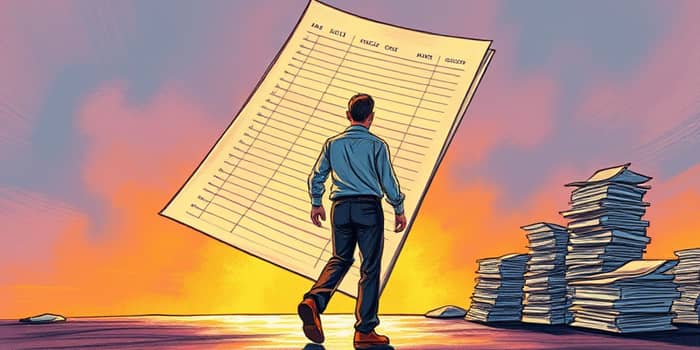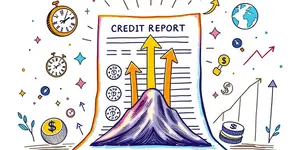
When a payment is missed, the impact can resonate far beyond a single billing cycle. Delinquent accounts carry a lasting footprint on credit reports, legal rights, and even personal well-being. Understanding this extended memory is crucial for anyone striving to regain financial stability and peace of mind.
Delinquency begins the moment a borrower fails to make a scheduled payment. From a late fee at 1–29 days past due to potential default after 90 days, each stage has its own set of consequences. These milestones form the backbone of a persistent record that lenders, collection agencies, and credit bureaus reference.
Even a single missed payment can trigger a chain reaction that lasts for years. With 4.7% of U.S. consumer debt—totaling $444 billion—already delinquent in 2019, the magnitude of this issue is clear.
Credit bureaus maintain a catalog of negative marks that can overshadow financial progress. Consumers often assume that settling a debt erases past mistakes, but the reality is more complex.
After these periods expire, negative marks drop off the report, but the debt obligation itself remains until fully satisfied. During this interval, borrowing costs rise and opportunities dwindle.
While credit bureaus adhere to a strict seven- to ten-year reporting window, the legal landscape operates on a separate clock. The statute of limitations defines how long creditors can sue to recover unpaid debts.
In most states, this window spans 3–6 years, though certain jurisdictions extend it to 15 years. Once expired, creditors lose the right to pursue lawsuits, but they may still employ less formal collection efforts.
This distinction matters: legal rights to sue differ from the obligation to pay, and knowing both timelines empowers consumers to make informed decisions about negotiation and settlement.
When debts enter collections, account management shifts from routine billing to intensive recovery efforts. Lenders and agencies deploy behavior scoring models, analyzing historical payment patterns and projected collectability to guide their strategies.
Even after accounts are charged off, credit bureaus maintain a digital record of every late payment, collection action, or legal judgment. This archive influences future lending decisions and often results in higher interest rates or outright denials.
Emerging research suggests that climbing delinquency rates may indicate more than financial distress. Studies have observed that increasing credit card delinquencies can appear more than five years before an Alzheimer’s diagnosis, while mortgage delinquencies rise roughly three years prior.
This correlation highlights a sobering reality: persistent account delinquency sometimes signals early cognitive decline rather than intentional mismanagement. It urges a compassionate approach to collection practices and emphasizes the importance of early detection.
On a human level, ongoing delinquency generates stress, family tensions, and barriers to essential services. Denied loans, rental applications, and even job opportunities can reinforce a cycle of hardship that extends well beyond numbers on a statement.
Reclaiming financial health requires a strategic blend of knowledge, negotiation, and disciplined budgeting. These steps can help consumers minimize lingering damage and chart a path toward stability:
By staying informed about both reporting and legal timelines, individuals can approach delinquent accounts with clarity and confidence, avoiding unnecessary payments or unwise settlements.
The memory of delinquent accounts stretches well beyond a single missed payment. With negative marks persisting for seven to ten years, legal actions possible for up to fifteen, and even health signals woven into payment behavior, consumers must view delinquency through a broad lens.
By combining awareness of reporting rules, statute of limitations, and emerging health correlations, you can transform a moment of financial setback into an opportunity for resilience. Armed with practical steps and a compassionate mindset, it is possible to navigate the long shadow of debt and emerge stronger on the other side.
References













